Surprisingly many answers in a short time...
I followed the same idea that was already proposed in other answers: When start time s is smaller than the end time e, then the result can be broken down into two separate computations, for the ranges [s,24] and [0,e].
This can be done "mutually" so there are only 3 simple cases to consider, and the remaining ones can be done with recursive calls.
However, I tried to
- consider the fact that (according to the images), the end points should be inclusive (!)
- Add some more test cases
- Visualize the configurations nicely :-)
This is the result as an MCVE:
public class OverlappingIntervals
{
private static final long INTERVAL_SIZE = 24;
public static void main(String[] args)
{
test(6,23, 2,17);
test(0,12, 12,2);
test(11,4, 12,3);
test(12,4, 11,3);
}
private static void test(
long s0, long e0, long s1, long e1)
{
System.out.println(createString(s0, e0, s1, e1));
System.out.println(findOverlappingInterval(s0, e0, s1, e1));
}
private static String createString(
long s0, long e0, long s1, long e1)
{
StringBuilder sb = new StringBuilder();
sb.append(createString(s0, e0, "A")).append("\n");
sb.append(createString(s1, e1, "B"));
return sb.toString();
}
private static String createString(long s, long e, String c)
{
StringBuilder sb = new StringBuilder();
for (int i=0; i<INTERVAL_SIZE; i++)
{
if (s < e)
{
if (i >= s && i <= e)
{
sb.append(c);
}
else
{
sb.append(".");
}
}
else
{
if (i <= e || i >= s)
{
sb.append(c);
}
else
{
sb.append(".");
}
}
}
return sb.toString();
}
public static long findOverlappingInterval(
long s0, long e0, long s1, long e1)
{
return compute(s0, e0+1, s1, e1+1);
}
public static long compute(
long s0, long e0, long s1, long e1)
{
if (s0 > e0)
{
return
compute(s0, INTERVAL_SIZE, s1, e1) +
compute(0, e0, s1, e1);
}
if (s1 > e1)
{
return
compute(s0, e0, s1, INTERVAL_SIZE) +
compute(s0, e0, 0, e1);
}
return Math.max(0, Math.min(e0, e1) - Math.max(s0, s1));
}
}
The first two test cases are the ones that have been given in the question, and they properly print 12 and 4, respectively. The remaining two are intended for testing other overlap configurations:
......AAAAAAAAAAAAAAAAAA
..BBBBBBBBBBBBBBBB......
12
AAAAAAAAAAAAA...........
BBB.........BBBBBBBBBBBB
4
AAAAA......AAAAAAAAAAAAA
BBBB........BBBBBBBBBBBB
16
AAAAA.......AAAAAAAAAAAA
BBBB.......BBBBBBBBBBBBB
16
However, note that further test configurations may have to be created in order to cover all possible cases.


